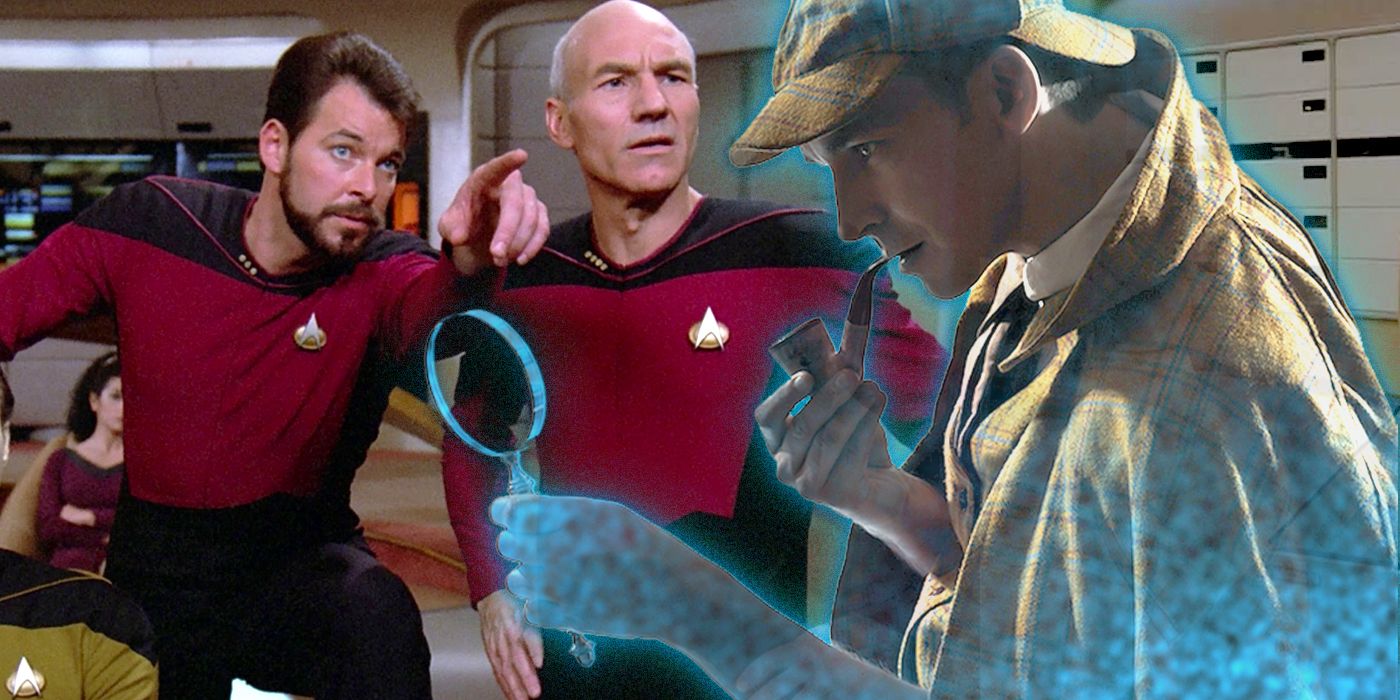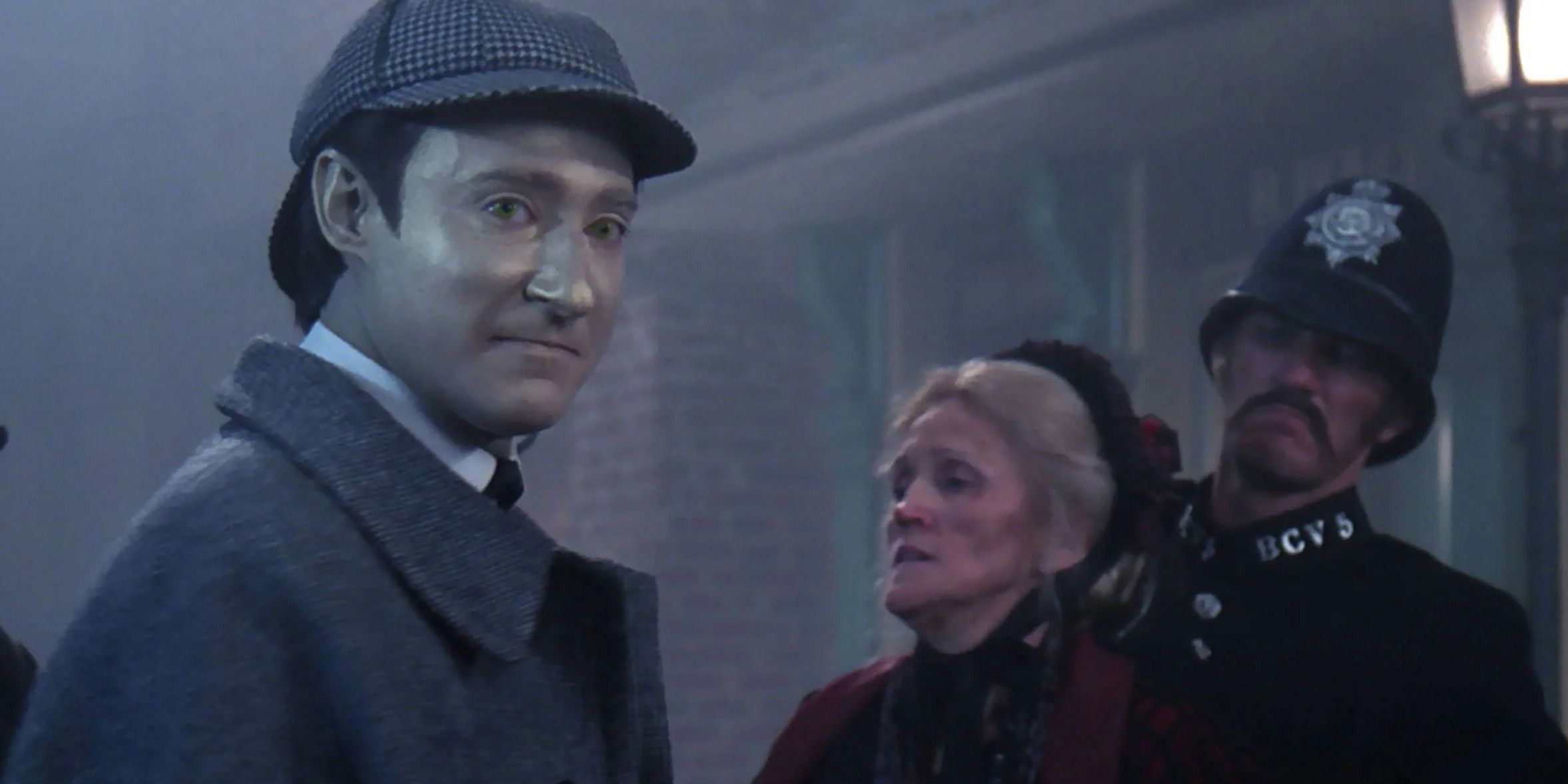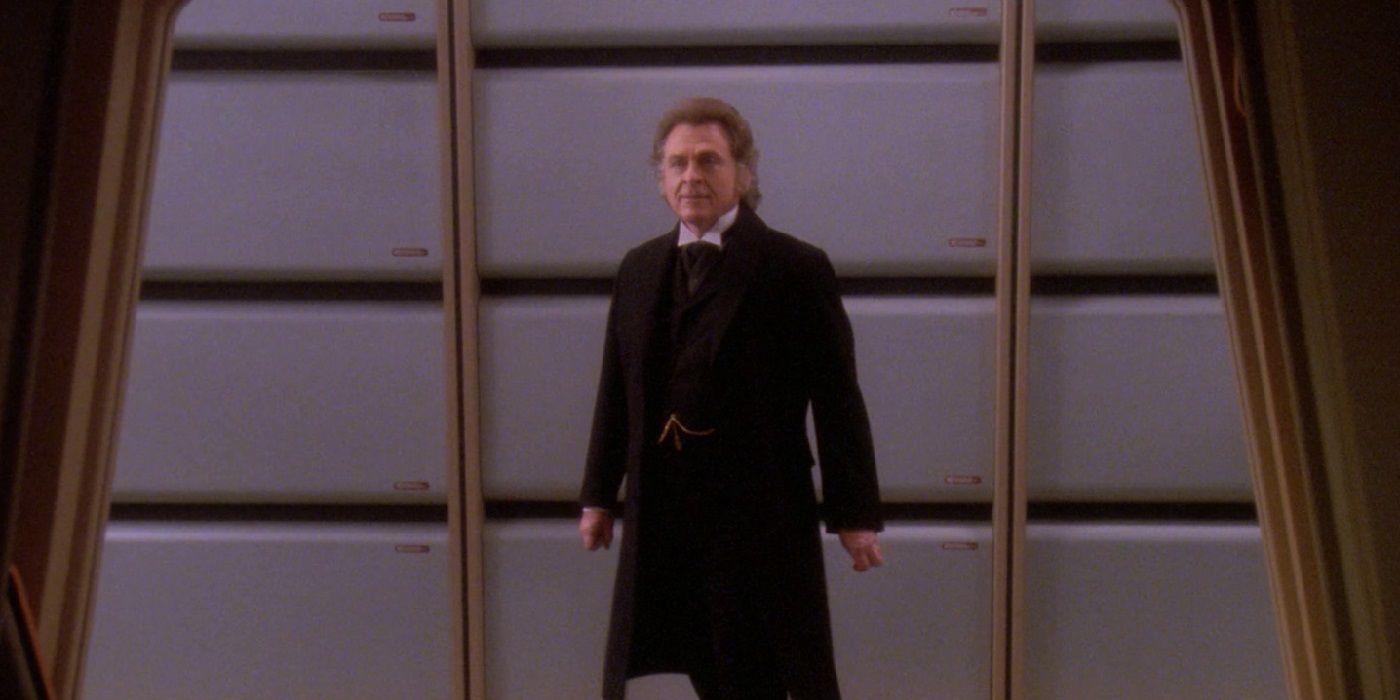
One of the peculiar quirks of Star Trek storytelling comes when seemingly harmless technology suddenly becomes a deadly threat. The transporter accident, for instance, has resulted in everything from the crew being transported to the Mirror Universe to two characters merging into one. Though it occasionally tested the limits of plausibility, the “murder box” trope is actually quite beloved by Trekkies, owing to the quality of the stories that come out of them. Nowhere is this more true than with Professor Moriarty, Sherlock Holmes’ longtime nemesis inadvertently given sentience in a memorable episode of The Next Generation. Though he only appeared twice, he gave the Enterprise crew all they could handle, and in the process quietly joined the ranks of Star Trek’s greatest adversaries.
Moriarty first appeared in The Next Generation Season 2, Episode 3, “Elementary, Dear Data,” in which Geordi and Data participated in a Sherlock Holmes holodeck simulation. In an effort to create a "new" adventure capable of defeating Data, Geordi inadvertently gives the holographic character sentience and awareness of the universe beyond the scenario. It was a sudden, inexplicable failure of basic safety, which makes little logistical sense. And yet, that didn’t matter because the script developed in such a clever way.

Moriarty’s awakening arose at the conclusion to a smart piece of character development in which Geordi attempts to get around Data’s built-in advantage in solving a drawing-room detective story. Moriarty’s sentience comes from poor phrasing -- logistically far-fetched, but a good hook for the story -- and when coupled with Data’s immense intellectual capacity, it organically produced a sentient hologram. The technological slip was almost invisible, hidden beneath the two lead characters trying to have a good time.
Logistical questions aside, Moriarty turned into quite an antagonist. Freed from the restraints of a Holmesian world, he sought to improve himself, seeking escape from the holodeck, not for conquest or personal gain, but to better understand a universe whose limits just exponentially expanded for him. He proved Data’s equal in every respect by posing a considerable threat to the Enterprise-D and its personnel. That began with kidnapping Dr. Pulaski and holding her hostage, ensuring that the crew couldn’t just erase him, forcing them to bargain for terms. He relented only when Picard pledged to free him from the holodeck and was forced to trust him at his word.

His arc continued and expanded in Season 6, Episode 12, “Ship in Bottle,” where he presented Picard with a stunning ethical failing. Between the two episodes, he had been aware of the passage of time: trapped in hellish non-existence and determined never to go back. The crew succeeded in "releasing" him only by convincing him that he had left the holodeck -- an impossibility at that point in the Star Trek timeline -- and providing him with a virtual universe to explore, indistinguishable from the real thing. It was a clever solution, but it took everything Picard and his crew had. In both episodes, the consequences extended far beyond the holodeck.
In the process, Moriarty became a singular Trek villain, challenging The Next Generation crew in ways that had nothing to do with physical force. And to its credit, Star Trek ran with the concept, extrapolating the technological reality of Moriatry's existence that eventually led to the EMH and Star Trek: Voyager’s beloved Doctor. The resiliency of the concept helped Trek overcome a cavalier attitude toward malfunctioning technology while producing some very good science fiction in the process.
0 Comments